Howard Andrew Jones's Blog, page 64
November 18, 2013
Reading Outside the Genre
 I used to get advice about how I needed to read outside my genre, and I didn’t.
I used to get advice about how I needed to read outside my genre, and I didn’t.
I used to get advice about studying other writers for technique, too, and I least understood that — thanks to Dr. Karl Barnaby’s great class on writing techniques I learned how to slow down to see how the sentences work, and to examine why THIS particular action scene was so effective.
One of the reasons that I thought I didn’t need to read outside my genre was because there was so much of my genre yet to read (and the genre’s even larger now). It’s always good to understand the history of your genre if you’re going to be working in it. But I think the other reasons were laziness, arrogance, and no good sign posts. Who can you trust about what’s really worth your time? You have to be careful. I mean, every crappy science fiction series gets devoted fans, which is why I didn’t try try Firefly (and discover how wonderful it was) for years.
This is all leading to a simple recommendation. I, personally, recommend to fantasy fans that they need to read a few books outside of their genre by Donald Westlake writing under the Richard Stark pseudonym.
Back when I was recovering from my knee surgery I finally dug out some books my buddy John Hocking had sent me, and one of them was the first Parker novel, by “Richard Stark.”
I have almost no interest in modern fiction. I have zero interest in crime fiction. But Hocking’s rarely steered me wrong, and the Parker novels… wow. I ended up reading a bunch of them from the library and I liked them so much I’ve decided to pick up copies to add to my permanent collection. I don’t do that much any more. As a matter of fact, mostly I downsize, selling off or giving away stuff I’m never going to read again and that the kids don’t want.
 What’s so great about Parker? Well, here’s a site with a great number of details, but my thumbnail reason for any writers reading this is pacing, plotting, and action sequences. Oh, and there’s constant surprise. You soak up enough Parker books and I bet your own pacing can’t help but be more turbo-charged, and maybe your plotting will start clicking along with fewer bumps as well. It’s been working for me, at least according to my beta readers.You can dismiss this stuff as “simple” but the Parker novels are deceptive. They’re like some average looking car with a beautiful souped up engine. You’ll be surprised by the great ride, and you may not even notice just how finely tuned the thing is if you don’t look under the hood. The more you read, the better you realize just how much Westlake/Stark knows what he’s doing, the more you’ll learn, and the more fun you’ll have.
What’s so great about Parker? Well, here’s a site with a great number of details, but my thumbnail reason for any writers reading this is pacing, plotting, and action sequences. Oh, and there’s constant surprise. You soak up enough Parker books and I bet your own pacing can’t help but be more turbo-charged, and maybe your plotting will start clicking along with fewer bumps as well. It’s been working for me, at least according to my beta readers.You can dismiss this stuff as “simple” but the Parker novels are deceptive. They’re like some average looking car with a beautiful souped up engine. You’ll be surprised by the great ride, and you may not even notice just how finely tuned the thing is if you don’t look under the hood. The more you read, the better you realize just how much Westlake/Stark knows what he’s doing, the more you’ll learn, and the more fun you’ll have.
Most of the Parker novels have been reprinted in a nice matched set by the University of Chicago Press in recent years, and I’ll probably accumulate them all. (The last few are still in print through another publisher.) I’ve never been much of a matched set guy – it’s the words between, not the covers, that matter to me — but I have so much respect for these that I’ll probably go to the bother. I know I’ll be re-reading. I think I’m even adding Westlake as Richard Stark up amongst my very favorite authors list. That’s two new ones I’ve added in just the last five years, both outside my genre, the first being western writer Ben Haas, who almost always wrote under a pseudonym himself.
That’s enough for today. Time to get writing.
November 15, 2013
Character Design, Part 2
 My friend Mick wrote in the other day on the site and told me he’d “love to hear more theory about how you pick weaknesses and flaws and how you use them.”
My friend Mick wrote in the other day on the site and told me he’d “love to hear more theory about how you pick weaknesses and flaws and how you use them.”
I’d originally planned to show a filled-in character sheet for Lisette, as discussed in the post of part 1, but Mick’s question intrigued me more and more when I realized I didn’t have a ready answer. So I’ll hold off on that character sheet for a few more days.
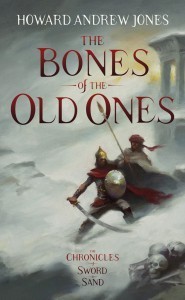 Before I do, I wanted to make clear that I’m sharing all these writing observations in a hope that they’ll be of use to other writers. I’m experienced, sure, but I don’t mean to present myself as an unassailable expert. I’m still learning a lot about the process (I realized something important about POV characters just this week that I’ll be blogging about soon). I don’t know that I’ll ever say that THIS is the only way to write fiction, or that THIS method is the only answer. I just know what I’ve learned the hard way seems to work for me.
Before I do, I wanted to make clear that I’m sharing all these writing observations in a hope that they’ll be of use to other writers. I’m experienced, sure, but I don’t mean to present myself as an unassailable expert. I’m still learning a lot about the process (I realized something important about POV characters just this week that I’ll be blogging about soon). I don’t know that I’ll ever say that THIS is the only way to write fiction, or that THIS method is the only answer. I just know what I’ve learned the hard way seems to work for me.
As to strengths and weaknesses, I believe they’re intimately connected. If you know what your character is good at, you may have an inkling about what they’re likely not as good at doing. If your character never hesitates doing the honorable thing, perhaps he or she is blind to the idea that other people don’t think like that. (It’s actually a common foible to assume that other people ARE like you, and it makes sense that realistic characters would think the same way.) Sometimes what makes you strong also makes you weak. Take Captain Kirk — he has a fantastic ship and crew, but if they’re in danger, he’s obsessed with worry about them. He’ll drive himself through sleepless nights trying to find a way to get them safely home.
What tethers a protagonist to reality so that they’re not an unstoppable juggernaut of awesome? Spider-Man is worried about his school work and money and his Aunt May. Fafhrd and the Gray Mouser may be great warriors and thieves, but they’ve got no head for money. Conan, well, he’s pretty unstoppable, but he’s not well-versed in sorcery, and there’s more than once over the course of the short stories where that stops him in his tracks.
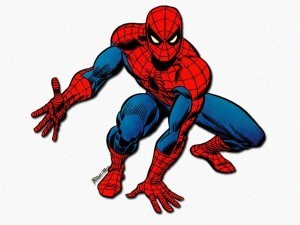 But when Mick writes of weaknesses, he’s probably not meaning krytponite level weaknesses so much as the kind of weaknesses that round out real human beings. Like the fact I tend to be kind of cranky as the evening wears on, or that my wife’s brilliance can intimidate other people without her even sounding remotely socially awkward like Sheldon or Amy from The Big Bang Theory. Which brings us back around to my first point, which is that the interesting weaknesses are connected to strengths. Wolverine’s a great lone wolf, but that means he has trouble connecting with others. Locke Lamora is independent and creative and protective of those he values, which means he sometimes puts himself in outrageously dangerous situations by trying to handle something on his own instead of getting help.
But when Mick writes of weaknesses, he’s probably not meaning krytponite level weaknesses so much as the kind of weaknesses that round out real human beings. Like the fact I tend to be kind of cranky as the evening wears on, or that my wife’s brilliance can intimidate other people without her even sounding remotely socially awkward like Sheldon or Amy from The Big Bang Theory. Which brings us back around to my first point, which is that the interesting weaknesses are connected to strengths. Wolverine’s a great lone wolf, but that means he has trouble connecting with others. Locke Lamora is independent and creative and protective of those he values, which means he sometimes puts himself in outrageously dangerous situations by trying to handle something on his own instead of getting help.
Applied to my own writing, Asim el Abbas is unfailingly honest. He tends to take things at their face value, although he does grow wiser. He’s not actually stupid, he’s just pretty straight forward and not one who usually thinks outside the box. Anyone who’s read the books knows how much that has hurt him, but also how much his perspective has assisted him as well.
And speaking of my own writing, I’d better go feed the horses and get to it. Oh — I almost forgot to mention. You can win a free copy of my new book, Stalking the Beast, by entering a contest over at Black Gate. Swing by and take a look!
November 14, 2013
Link Day
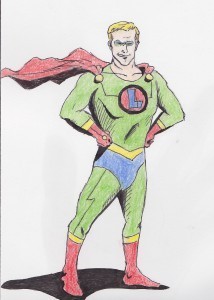
Copyright Darian Jones
My absence this week has all been due to keeping up the homestead and working away on writing deadlines. I have a lot more writing pointers to discuss, but today I’m just going to provide some links.
First, part 1 of a 4 part story featuring Lisette, one of the point-of-view characters from my new book, Stalking the Beast, is now available over at Paizo. You can find “Bells for the Dead” there.
Second, Jon Sprunk penned a nice “things you ought to know if you’re going to succeed at writing” piece for Black Gate this week. Go take a look.
I’ll be back soon with some stuff of my own.
Link Man, away!
November 8, 2013
Character Design, Part 1

Matt Groening designed characters that could be recognized by silhouette alone.
I had the privilege of sitting down with Patrick Rothfuss at Detroit’s ConFusion last January, and he was kind enough to discuss some of the methods he uses to build characters. I think the observation that most struck home for me was that it’s hard for readers and writers to remember everything about a character’s appearance. Pat personally felt that you shouldn’t give a character more than three “tags” to identify them.
Being a student of the pulps I was familiar with the idea of creating a character with something distinctive you can revisit to help the reader picture what’s happening. But I’d never heard advice about tags distilled quite this way, and I think Pat gave me a central truth.
I thought about that tag limit for my own characters and realized I’d been doing it unconsciously for a lot of them. Dabir has a spade beard and bright blue eyes. Elyana has auburn hair and violet eyes and, well, she’s an elf. Drelm’s a half-orc, which is distinctive enough, but the things that stands out are his immaculate clothing and armor, and the noble way he carries himself.
Still, I don’t think I’d made these tag limits deliberately, and now when I create characters I remember Pat’s advice. Lately I’ve been striving to be more systematic — writing is my job now, and I am constantly striving to do better at it.
What follows is the character design template I’m using these days, partly inspired by Scrivner’s Character Sketch template and character sheets from various role-playing games, but mostly inspired by what I’ve learned, the hard way, that I need to know about a character as I’m writing.
I have three broad categories: Outer world, Connections, Inner World.
 Outer World
Outer WorldCharacter Name
Age/Apparent Age
Social Status
Occupation
Full Description
Three Descriptor Tags
Always travels with:
Finest Skills
Weaknesses
Connections
Friends
Allies
Enemies
Parents
Siblings
Other Relatives
Mentor
Employer
Place in Organization
Inner World
What Character Thinks of Herself
What Character Is Really Like
What Character Thinks She Wants
What Character Really Wants
Religious Beliefs
Favorite Sayings/Catchphrase
Mannerisms
I just discovered that a sample chapter went up over at Paizo from my new novel, Stalking the Beast, featuring my new character, Lisette. That’s her up there, with art work by Roberto Pitturu. I’ll provide a link to that excerpt here so you can see her in action, and then if you’re still curious about how I use my Character Design template, I thought I’d post the one I used for her in the next few days so you can see how it helped me portray her.
November 7, 2013
Character Writing Prompts
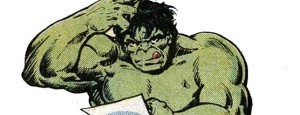 I didn’t understand writing prompts or their purpose when I was younger. Maybe it’s because I always knew what I wanted to do even though I wasn’t aware that wanting wasn’t quite the same thing as knowing how to achieve that writing objective. Writing prompts? I’d roll my eyes at them all through high school and all through college writing courses because I was so eager to get to the story I already had in mind. (The story that wouldn’t work because my characters were cardboard.)
I didn’t understand writing prompts or their purpose when I was younger. Maybe it’s because I always knew what I wanted to do even though I wasn’t aware that wanting wasn’t quite the same thing as knowing how to achieve that writing objective. Writing prompts? I’d roll my eyes at them all through high school and all through college writing courses because I was so eager to get to the story I already had in mind. (The story that wouldn’t work because my characters were cardboard.)
As a result of that eye rolling, I, who thought himself so special, wasn’t open to learning some techniques that really could have helped me get better a lot sooner. (Aren’t all of us who like to write sold that bill of goods about being special from movies and books that celebrate how magical it is to be a writer? Post for another time.)
Yesterday I was writing about how important it is to know your character if you’re going to write swiftly. Well, one of the ways you can get to know those characters so that the prose flows smoothly is to ask some essay questions and then try to write answers in that character’s voice. The trick to avoid making the task onerous is to give yourself a time limit — no more than 5 or 10 minutes. Time yourself, and stop. If it sucks, you haven’t wasted much time and have actually SAVED yourself some time by discovering stuff that can’t possibly work.
But if that essay does NOT suck, give yourself permission to go further, or shove the essay into a folder (be it electronic or manilla) to tap when you need to remember who that character is.
As for those prompts to get you going, if you’re a pencil and dice role-player, you’ve probably seen the sorts of questions you’re asked when you’re designing a character, and similar questions can really get the creative juices flowing. Here are just a few samples, slanted naturally toward the adventure fantasy I prefer to write:
If you have siblings, with which one are/were you closest?
Who was your mentor, and what was your relationship like?
What was your first job, and who did you work with?
When did you first wield a weapon/magic?
When did you first see truly masterful use of a weapon/magic?
What do you want in life?
If you could change one thing in your life, what would it be?
If you could trade places with one person, who would that be?
Who was your first love?
What’s the scariest thing you ever experienced?
On a day when you’re having trouble with the prose, or feel like you’re floundering with the characters, try out one of these, or something similar. Remember, write no more than 5 to 10 minutes on one of them, for one character. Decide in advance whether you want 5 or 10 minutes and then stop when the timer dings. And if you like where it’s going, keep going, or if you realize where it went wrong but feel inspired, you can start over.
November 6, 2013
On Writing Swiftly
 Sometimes I write quickly. Occasionally, when I write quickly, I write well. Most of the time, though, I don’t. I have to revise and re-revise and throw things out.
Sometimes I write quickly. Occasionally, when I write quickly, I write well. Most of the time, though, I don’t. I have to revise and re-revise and throw things out.
You’ll find me peering with envious eyes over the shoulders of great writers who write quickly, studying, studying, trying to divine the secrets.
And I think I’ve learned a few. I AM getting faster. Some of it just comes from experience, but some of it, for me at least, comes down to conscious choices.
Thinking back over the best successes I’ve had with writing well, swiftly, I can recall a Dabir and Asim story I wrote in one sitting (“Servant of Iblis”) and an occasional chapter or two that ended up with only a few words changed between when I crafted it in a blaze of inspiration and when it appeared in print. And I think about what I’ve learned talking to talented writers who write swiftly and reading about those from the past. As a result I can make a few generalizations. Maybe they’ll help you as National Novel Writing Month gets into full swing.
1. Know your characters. Know them backwards and forwards. Most importantly, know what every single one of them wants before you start writing the scene, as I keep repeating, for I need to keep reminding myself of this very important truth. So long as I remember that, my writing is stronger. When you’re writing the scene, you’re the director, telling everyone what their motivation is. And if, while you’re thinking about the character, you get a voice telling you it doesn’t quite make sense, you need to step back and talk with the “actor” or maybe even talk with the playwright, to alter some things before you start writing. And as I mentioned at a recent writing workshop, there are two reasons even many of Shakespeare’s bit parts are memorable. A.) It makes for a more interesting story and B.) every actor who was part of his company wanted the moment in the sun. If you think like a playwright who wants to make the story interestng and give everyone a moment, you’re likely to help your writing.
2. Focus. Everyone tells you how much you must focus, but before you focus, you have to have the plan in place for what’s going to happen, based on those characters that you allegedly know so well. Know them, and what they’re capable of, and what they want to do, and then you can channel your energies.
3. Miscellaneous and sundry. I’ve tried all kinds of things. I’ve tried writing with music on and music off. I’ve tried speaking my prose out loud as I write it, something that worked to great effect for Robert E. Howard when he crafted his most visual scenes. I’ve tried (and recommend) shutting off access to the Internet. There are probably some more little tips, and feel free to send ‘em in to me, but I don’t think any of them will help too awful much if you don’t know your characters. And different tips work for different people. Me, I can’t stand to write with music on, because it distracts me.
4. My fourth and final technique is the Dr. McCoy Test. (“I’m a doctor, not a moon shuttle conductor.”) If I remember to stop every now and then during my writing time and take the Dr. McCoy test (applied to writers, that is) I can stay on track. Am I a writer, or a FB checker? Am a writer, or a news junkie? Am I a writer, or a blogger?
Speaking of which, blog time is over. Time to get to work.
November 5, 2013
Icicles
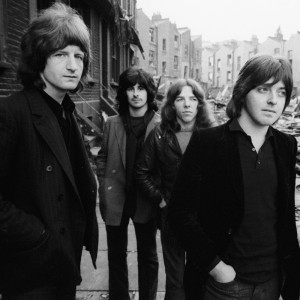 I don’t have any yet, but with the coming of cold weather, I was put in mind of one of many great Badfinger tracks most people have never heard of. There’s a lot more great stuff from this band that never got radio play. So under-appreciated.
I don’t have any yet, but with the coming of cold weather, I was put in mind of one of many great Badfinger tracks most people have never heard of. There’s a lot more great stuff from this band that never got radio play. So under-appreciated.
Here, take a listen. I’ve got to get to some writing.
November 1, 2013
Stalking the Beast
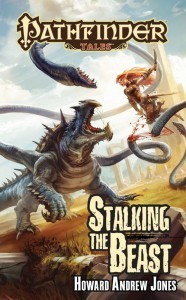 My new book is out, NOW! You want monsters, monster slayers, death defying feats, a canny, intelligent female leader? Check out Stalking the Beast. It’s a standalone sequel to Plague of Shadows, which means that most of the heroes who happened to survive the first book take center stage in the second. Get thee to a store and get to reading!
My new book is out, NOW! You want monsters, monster slayers, death defying feats, a canny, intelligent female leader? Check out Stalking the Beast. It’s a standalone sequel to Plague of Shadows, which means that most of the heroes who happened to survive the first book take center stage in the second. Get thee to a store and get to reading!
Here’s the official back cover copy: ”When a mysterious monster carves a path of destruction across the southern River Kingdoms, desperate townsfolk look to the famed elven ranger Elyana and her half-orc companion Drelm for salvation. For Drelm, however, the mission is about more than simple justice-it’s about protecting the frontier town he’s adopted as his home, and the woman he plans to marry. Together with the gunslinging bounty hunter Lisette and several equally deadly allies, the heroes must set off into the wilderness, hunting a terrifying beast that will test their abilities-and their friendships-to the breaking point and beyond. But could it be that there’s more to the murders than a simple rampaging beast?”
For more details, visit SF Signal, where I was recently interviewed by Patrick Hester about both this novel and my Dabir and Asim books. Or you can swing by Paizo and look over my Q & A about the book, or read an essay where I talk about both writing for Paizo and my gaming background.
October 30, 2013
Vincennes Writer’s Festival
 I don’t think I’ve ever turned the blog over to anyone else, but today I’m going to do so, because Judy Kratzner has said everything I’d say about the matter, and with all the detail required. In short, if you’re in the region and want to learn about writing and talk to some writers (including this one!), I hope you’ll swing by. Take it away, Judy:
I don’t think I’ve ever turned the blog over to anyone else, but today I’m going to do so, because Judy Kratzner has said everything I’d say about the matter, and with all the detail required. In short, if you’re in the region and want to learn about writing and talk to some writers (including this one!), I hope you’ll swing by. Take it away, Judy:
The Knox County Public Library is hosting the Second Annual Writers Festival, Saturday, November 2nd, 9-3 p.m. Speakers include award winning authors Margaret McMullan, James Alexander Thom, Howard Andrew Jones and Vincennes University faculty Bernie Schmitt and Matt Groneman. Registration is underway . The $30 registration includes attendance at all sessions, handouts and snacks. Stop by the library for the registration form or go online www.kcpl.lib.in.us.
November 2nd an author Meet & Greet with the speakers and an additional ten authors is free and open to the public from noon- 2 p.m. The additional guest authors include Marlis Day, Dale Glenn, Rick Kelsheimer, Holli Rebecca Burnfield, Darrell Case, Jeanne James Cox, David Lottes, Jennifer Mackinday , Venessa Purdom and Angie Mayfield. The authors will have books for sale and signature.
For information on the Writers’ Festival call Judy Kratzner, KCPL Literacy Coordinator at 812-886-4380.
October 29, 2013
Writing Mistakes, Part 2

Puny Banner poses beside Hulk’s Car.
Well, I finally performed the proper web site magics to add Stalking the Beast to the Home Page book slider. I forgot how I had done it the last time, so it took a good chunk of the evening.
Today I wanted to take another quick look at parts of my Writing Mistakes list, particularly the ones I thought needed clarification. I’ll just pick the ones that sound vague to me and offer more explanation. If there were some from last week that you wanted to know more about, drop me a line.
Don’t excuse plot flaws with dialogue: By this I mean if you’re aware of a plot flaw and are afraid that the readers will be aware of the plot flaw, one possible way to address it is by having the characters talk through it, so that the readers knows that you know and you wink at each other. I think it can work for comedy, but for adventure fiction… I just try to fix the plot problem.
Keep a clear through line: If at any point in the story a friend stops you and says hey, what’s the book about and you can’t explain why the characters are doing what they’re doing (Indy’s after the headpiece to the staff of Ra) you may have a problem. If you, the writer, can’t explain what the characters are doing and why, you can bet that your readers are going to be even more muddled.
Know the difference between procrastination and incubation AND Trust starting reluctance. There may be something wrong with the scene: These two points are closely related. Some days I’m lazy and don’t feel like writing, and on those days I just need to put the butt in the chair and get to work. But sometimes I’ve discovered that I’m hesitating not because I’m lazy but because there’s something wrong — the plot doesn’t really work or the characters aren’t well enough motivated. THAT means that the story needs to incubate, so perhaps during writing time on that particular day what I need to do is make sure I understand what all the characters want, make sure that all the characters are necessary, and that I have a clear through line.
Play to your strengths — dialogue, character interaction, small cast: In first draft especially I think it’s important to play to your strengths. This particular part of the list is especially relevant to me. Dialogue and character interaction come quickly for me (once I know the characters) and those scenes are easy to write. Sometimes vast sections of my rough draft consist of dialogue and what reads basically like stage directions. I can come back later and add in poetic metaphor. If dialogue isn’t your particular strength, build your rough draft framework on whatever your strength is.
Trouble revising? Read sections out of order: This one’s probably clear enough, but just in case — I find that when I’m revising I can gloss over things that later pop-up and hit me in the head with a hammer (how did so much word echo get in here after I’ve revised it? Wasn’t that character dead two chapters back?) When I feel like I’m zoning out too much, I’ve discovered that I can get my mojo back by reading chapters or scenes out of order.
Howard Andrew Jones's Blog
- Howard Andrew Jones's profile
- 368 followers



